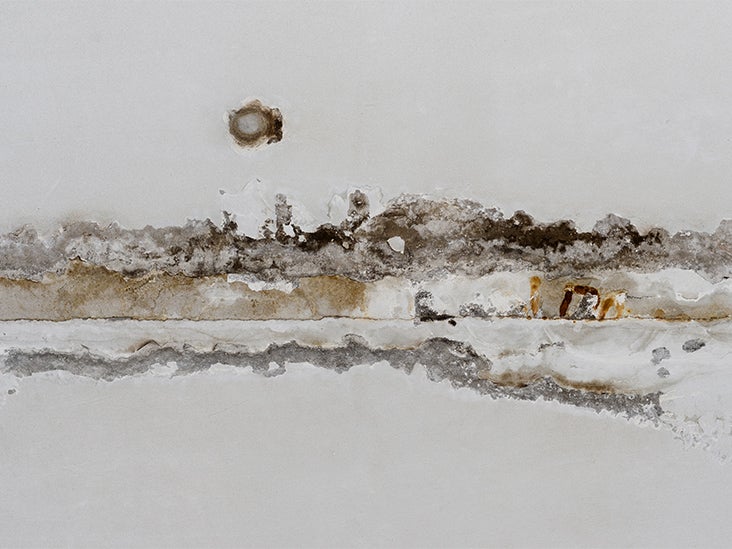
Mold is an insidious problem that can affect our health and the safety of our homes. While there are many different types of mold, some are more dangerous than others. These types of mold can cause a number of health problems including respiratory problems, asthma, headaches, and more. An expert specialized in mold removal in Toronto lists the most dangerous types of mold and what you need to know about them in order to keep your family safe.
Stachybotrys Chartarum:
Exposure to Stachybotrys chartarum can cause serious respiratory issues such as asthma, coughing, sneezing, and difficulty breathing. It can also lead to skin irritation, eye irritation, nosebleeds, and fatigue. In extreme cases, it can even lead to memory loss and neurological disorders.
Its important to remove any Stachybotrys chartarum from your home as soon as possible. Professional mold remediation is recommended for this type of mold because it can be very difficult to remove on your own.
Aspergillus:
Aspergillus are often found outdoors, but they can also be found inside the home. This type of mold is one of the most dangerous molds because it produces whats known as mycotoxins. In some cases, exposure to this type of mold can cause serious health problems, including inflammation and fever.
Symptoms associated with exposure to aspergillus include coughing, wheezing, and chest tightness. People who have weakened immune systems, such as those with asthma or diabetes, may be at a higher risk for developing serious complications from breathing in aspergillus spores.
It is important to have any suspicious areas in your home inspected by a professional and proceed with mold removal in Toronto at the earliest time possible.
Fusarium:
Where is fusarium found? This type of mold is typically found in soil and plants, but it can also grow inside homes on fabrics and carpets if there’s a damp environment. Fusarium spores are easily spread through water, so its important to take the necessary steps to prevent water damage if you want to avoid this type of mold.
Fusarium can also trigger allergic reactions in those who are especially sensitive to it. In addition to health concerns, Fusarium can also cause damage to materials like fabrics, carpets, insulation, and drywall. It can even grow in subflooring and flooring if it’s given enough time and the right environmental conditions.
Like Aspergillus, Fusarium also produces mycotoxins. For this reason, it’s important to identify any Fusarium growths early on and remove them as soon as possible.
Chaetomium:
Chaetomium is a type of mold found in damp, water-damaged buildings. It usually appears as a white, grey, or brownish cottony growth. This type of mold is most often found on paper, wood, and other cellulose materials. It also has a strong musty odor.
Despite its appearance and smell, it is one of the most dangerous types of molds because it can produce toxins known as chaetoglobosins that can cause serious health problems when inhaled.
People may experience shortness of breath, nosebleeds, respiratory infections, coughing, sneezing, skin rashes, asthma attacks, and even fever if exposed to chaetomium for extended periods of time.
Alternaria:
Alternaria is found in soil and plant matter. When it comes to health concerns, Alternaria can cause inflammation and irritation of the eyes, nose, and throat. In some cases, skin lesions may also appear if exposed to Alternaria for an extended period of time.
It is important to take note of any signs of Alternaria in your home or workplace and act promptly. If you see signs of mold growth, make sure to remove any damp material that could be harboring it, and increase ventilation in the affected area. And talk to an expert if you need help with mould removal in Toronto.
Ascospores:
These types of mold form inside an ascus, which is a sac-like structure. When conditions are right, the ascus will burst and release the ascospores. These spores can then spread easily, often becoming airborne and leading to health problems for those in the area.
In addition, some species of ascospores can cause a severe allergic reaction in humans when inhaled. The allergenic potential of these types of molds can be further increased by their ability to thrive in high-humidity environments. Ascospores are considered an allergen, according to studies.
Aureobasidium:
This is a type of mold that can be found both indoors and outdoors, usually in damp areas such as bathrooms, kitchens, or other areas where there is water damage or high humidity. The most common form of this mold is pink, but it can also be black or brown.
It has a velvety texture and can easily spread by producing airborne spores. If not removed quickly, these spores can settle on other surfaces and cause an outbreak. It is known to cause infections on the skin, eye, and nails.
Mold can be a serious health hazard if not managed properly. Now that you what are the most dangerous types of mold, make sure to take the necessary steps to protect your family and your home. Start by hiring a team of professionals who knows the ins and outs of mould remediation in Toronto. They will help get rid of this problem so that everyone stays safe.

